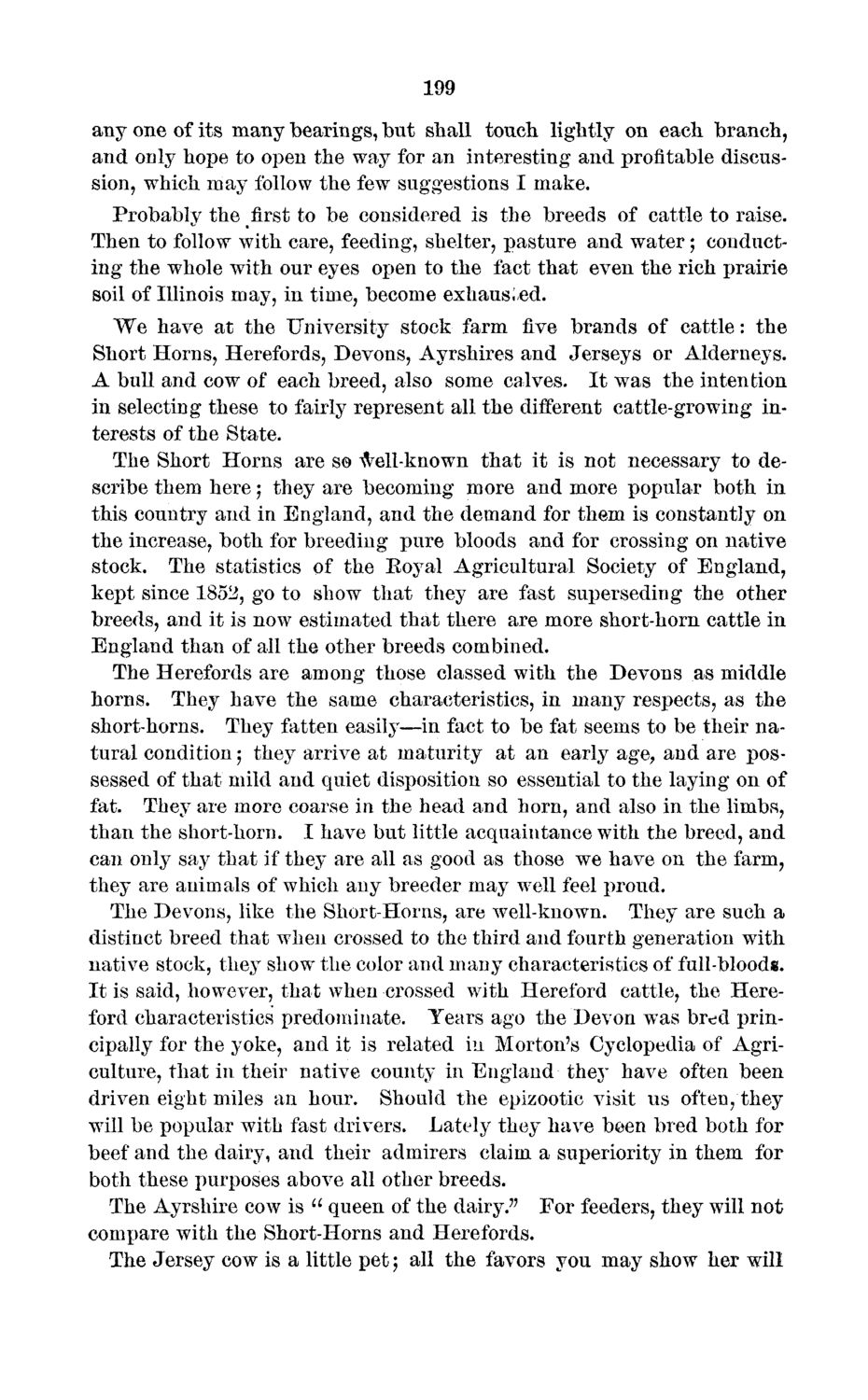| |
| |
Caption: Board of Trustees Minutes - 1873
This is a reduced-resolution page image for fast online browsing.

EXTRACTED TEXT FROM PAGE:
199 any one of its many bearings, but shall touch lightly on each branch, and only hope to open the way for an interesting and profitable discussion, which may follow the few suggestions I make. Probably the first to be considered is the breeds of cattle to raise. Then to follow with care, feeding, shelter, pasture and water; conducting the whole with our eyes open to the fact that even the rich prairie soil of Illinois may, in time, become exhausted. We have at the University stock farm five brands of cattle: the Short Horns, Herefords, Devons, Ayrshires and Jerseys or Alderneys. A bull and cow of each breed, also some calves. I t was the intention in selecting these to fairly represent all the different cattle-growing interests of the State. The Short Horns are so well-known that it is not necessary to describe them here ; they are becoming more and more popular both in this country and in England, and the demand for them is constantly on the increase, both for breeding pure bloods and for crossing on native stock. The statistics of the Eoyal Agricultural Society of England, kept since 1852, go to show that they are fast superseding the other breeds, and it is now estimated that there are more short-horn cattle in England than of all the other breeds combined. The Herefords are among those classed with the Devons as middle horns. They have the same characteristics, in many respects, as the short-horns. They fatten easily—in fact to be fat seems to be their natural condition 5 they arrive at maturity at an early age, and are possessed of that mild and quiet disposition so essential to the laying on of fat. They are more coarse in the head and horn, and also in the limbs, than the short-horn. I have but little acquaintance with the breed, and can only say that if they are all as good as those we have on the farm, they are animals of which any breeder may well feel proud. The Devons, like the Short-Horns, are well-known. They are such a distinct breed that when crossed to the third and fourth generation with native stock, they show the color and many characteristics of full-bloods. It is said, however, that when crossed with Hereford cattle, the Hereford characteristics predominate. Years ago the Devon was bred principally for the yoke, and it is related in Morton's Cyclopedia of Agriculture, that in their native county in England they have often been driven eight miles an hour. Should the epizootic visit us often, they will be popular with fast drivers. Lately they have been bred both for beef and the dairy, and their admirers claim a superiority in them for both these purposes above all other breeds. The Ayrshire cow is " queen of the dairy." For feeders, they will not compare with the Short-Horns and Herefords. The Jersey cow is a little pet 5 all the favors you may show her will
| |